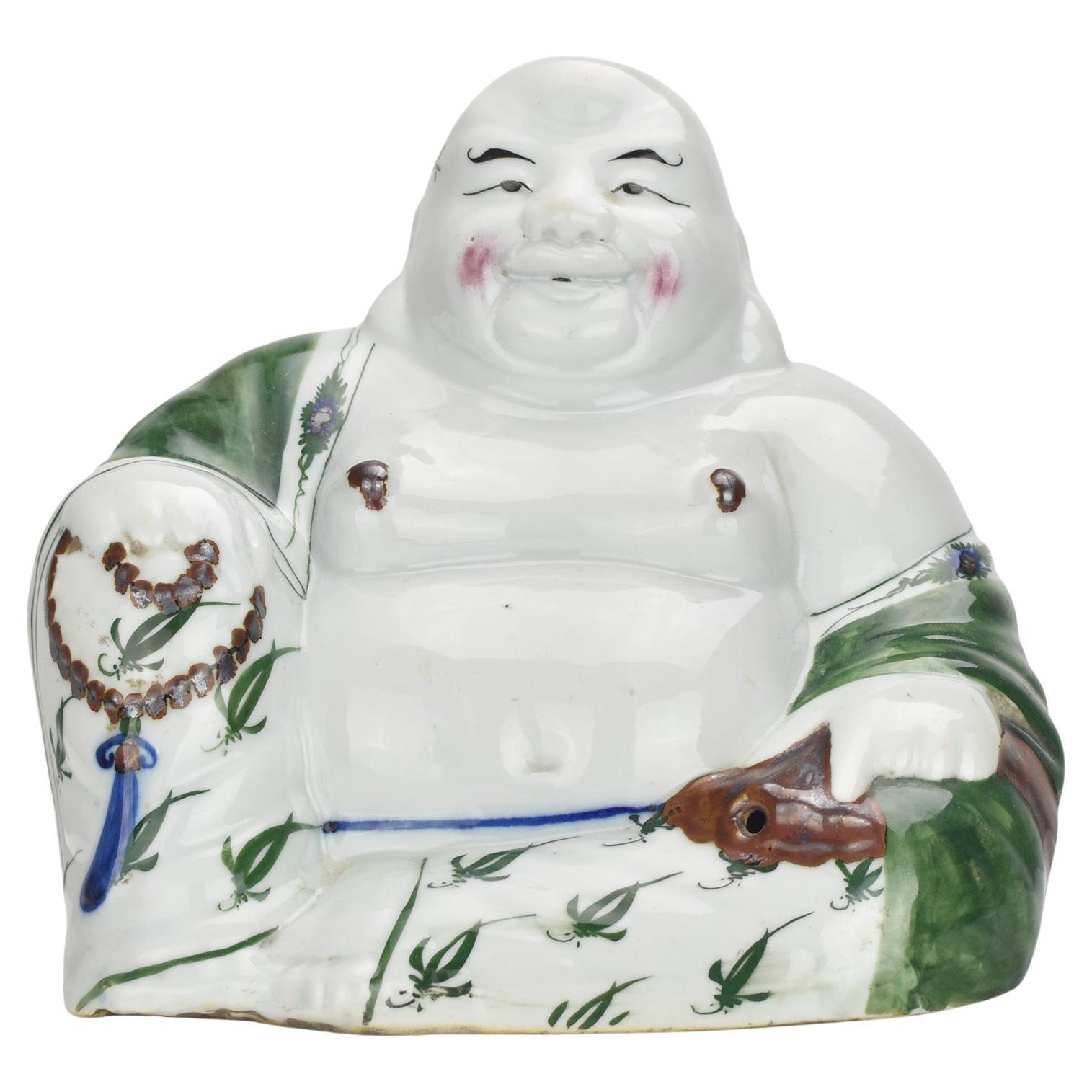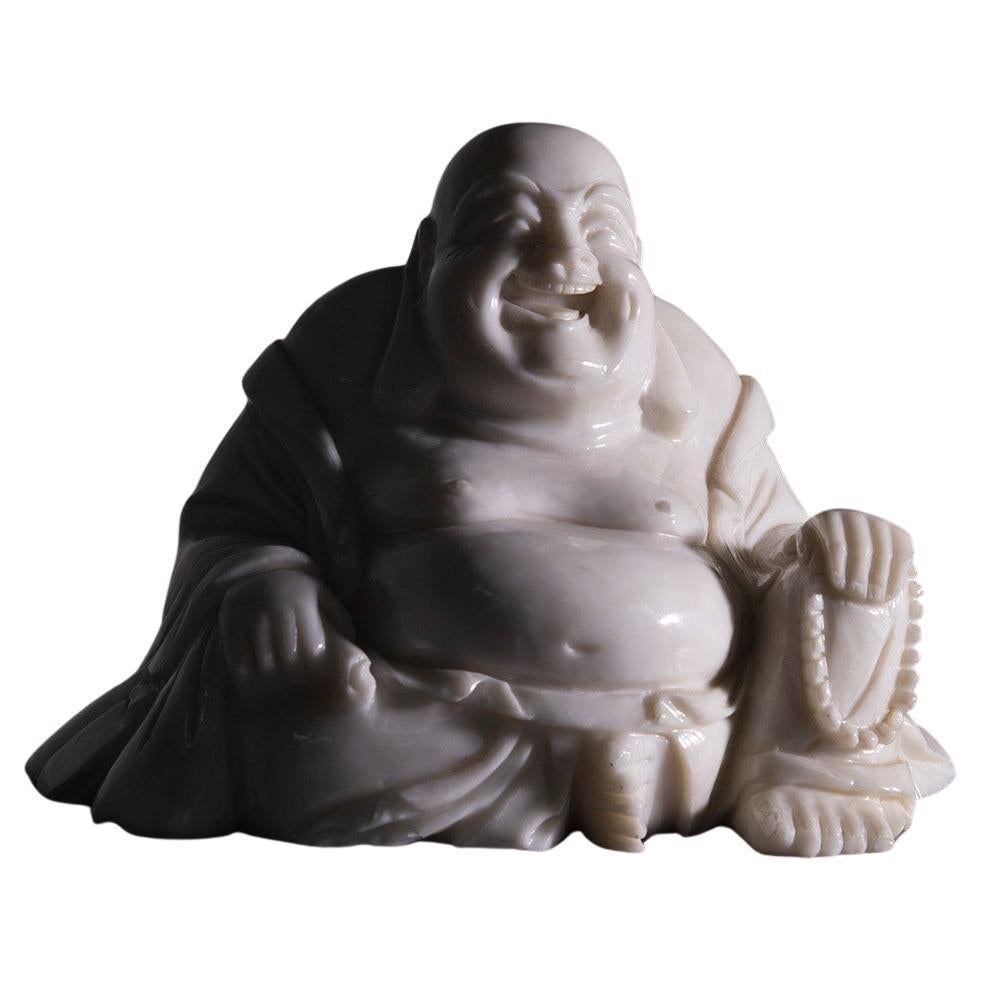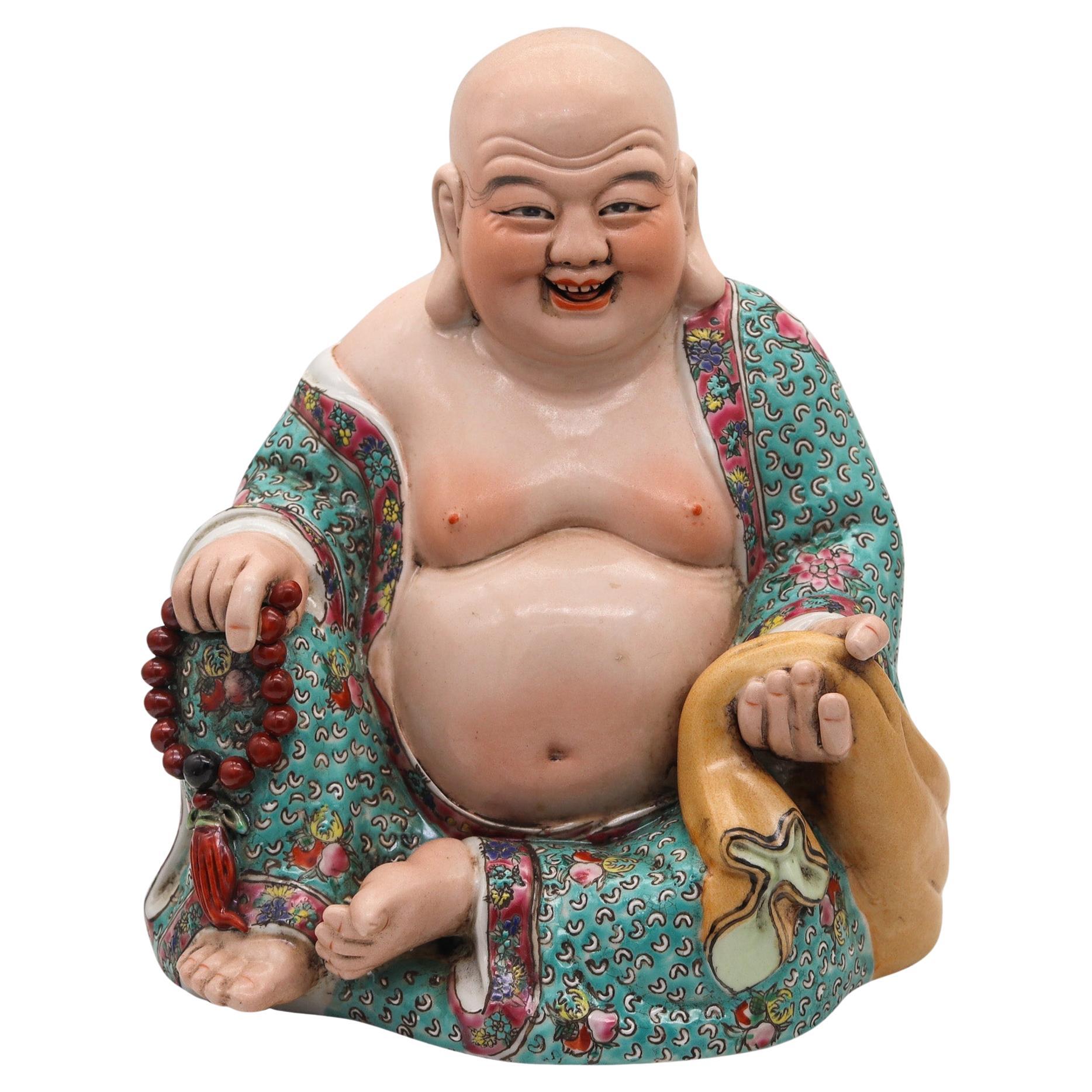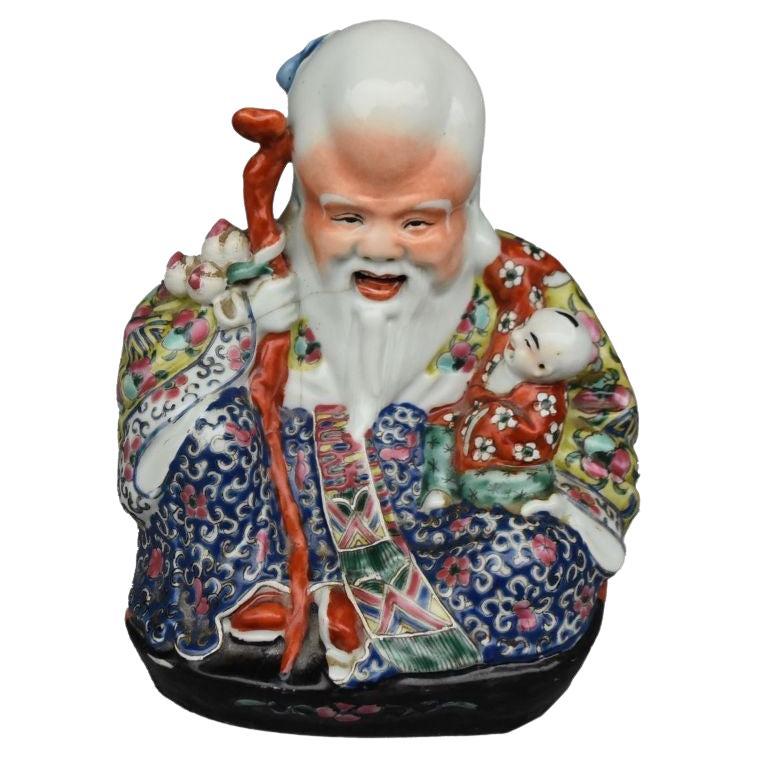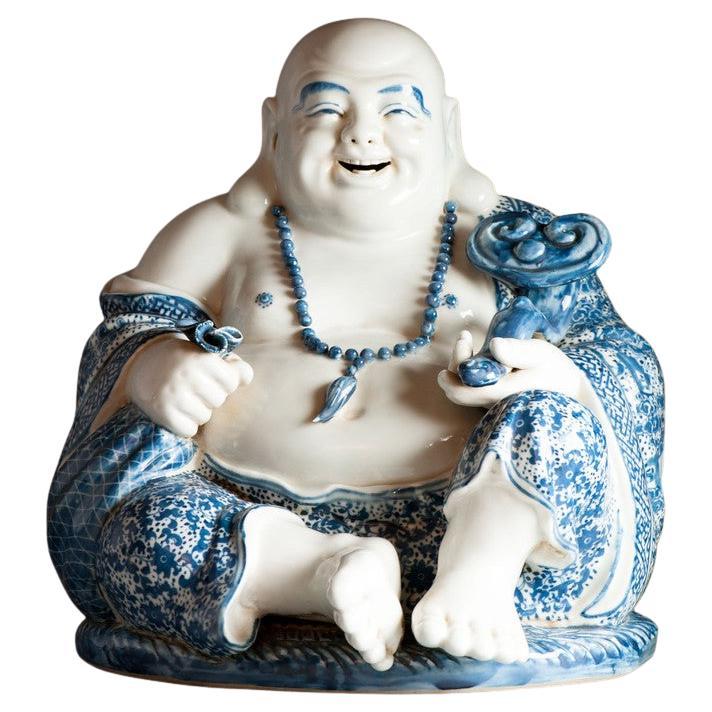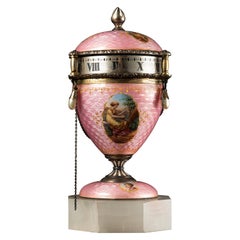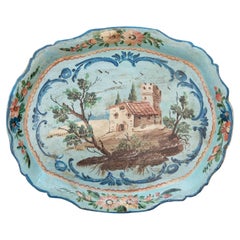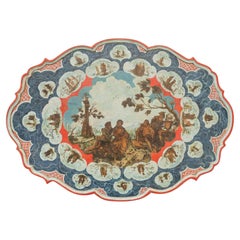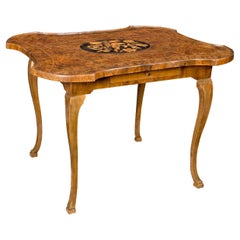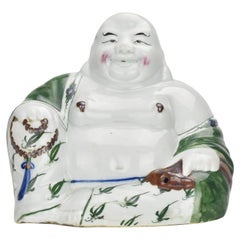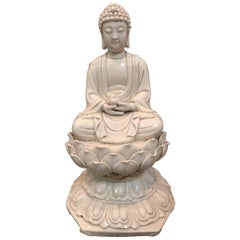Items Similar to Magot, original 19th century porcelain Buddha
Video Loading
Want more images or videos?
Request additional images or videos from the seller
1 of 6
Magot, original 19th century porcelain Buddha
$10,102.95
£7,479.24
€8,450
CA$13,979.96
A$15,412.59
CHF 8,063.37
MX$189,083.82
NOK 101,501.83
SEK 94,920.26
DKK 64,366.92
About the Item
Magot of exceptional size with tilting head, tongue and hands. Material made entirely of porcelain, with the exception of the "biscuit" hands.
What are magots?
The word magot comes from the French: barbary ape. They are male or female figures with oriental features. Usually the material used for the representation was painted or decorated porcelain. The subject depicted, in a good-natured and pleasant way, is Pu-Tai. The Chinese god of happiness and abundance.
It is said that they brought good luck because, thanks to their head, tongue and jointed hands, they were able to warn earthquakes.
They arrived in Europe between the end of the seventeenth century and the beginning of the eighteenth century thanks to the first connections between European merchants (Venetian in particular) and Chinese. In the following decades, they became a status symbol to be displayed in aristocratic homes. They found fertile ground in Europe thanks to the fashion for the exotic that developed in the Old Continent during the first decades of the eighteenth century. This fashion can be found in various objects of the time, not only in the Magot, see the toilet objects and lacquered furnishings decorated with the famous chinoiseries.
In a few years, thanks to the increased demand, our factories also began working to satisfy this new form of collecting.
From the German ones: Meissen, Dresden, Rudolstadt; to the French ones: Saint Claude Samson and Chantilly, to the Italian ones.
True masterpieces were created throughout Northern Italy. The Piedmontese ones, made of papier-mâché, were then unusual.
Authenticity:
Completely intact to the naked eye and the infrared lamp. The magot has only been thoroughly cleaned, in fact, for porcelain, we cannot speak of patina (dirt that is deposited over hundreds of years, which some buyers want to be present, for example, in antique wooden furniture) so once cleaned it goes back to like new.
You can see the signs of aging and therefore the originality thanks to the patina on the bottom and inside and, sometimes and as in this case, the presence of small streaks along the entire surface.
Materials:
body and head in white porcelain, hands in "biscuit"
Dimensions:
h: 36 X l: 34 X depth: 28 [cm]
h: 14.17 x l: 13.38 x l: 11.02
- Dimensions:Height: 14.18 in (36 cm)Width: 13.39 in (34 cm)Depth: 11.03 in (28 cm)
- Materials and Techniques:
- Place of Origin:
- Period:
- Date of Manufacture:1880
- Condition:Wear consistent with age and use.
- Seller Location:Vicenza, IT
- Reference Number:1stDibs: LU9729238942822
About the Seller
No Reviews Yet
Vetted Professional Seller
Every seller passes strict standards for authenticity and reliability
Established in 2024
1stDibs seller since 2024
- ShippingRetrieving quote...Shipping from: Altavilla Vicentina, Italy
- Return Policy
Authenticity Guarantee
In the unlikely event there’s an issue with an item’s authenticity, contact us within 1 year for a full refund. DetailsMoney-Back Guarantee
If your item is not as described, is damaged in transit, or does not arrive, contact us within 7 days for a full refund. Details24-Hour Cancellation
You have a 24-hour grace period in which to reconsider your purchase, with no questions asked.Vetted Professional Sellers
Our world-class sellers must adhere to strict standards for service and quality, maintaining the integrity of our listings.Price-Match Guarantee
If you find that a seller listed the same item for a lower price elsewhere, we’ll match it.Trusted Global Delivery
Our best-in-class carrier network provides specialized shipping options worldwide, including custom delivery.More From This Seller
View AllEgg-shaped clock with enamel decorations.
Located in Vicenza, IT
Egg-shaped center clock in guilloche enamel, white onyx base.
Period: first quarter of the 20th century / last quarter of the 19th century
Balance wheel movement and remontoire windi...
Category
Early 20th Century European Belle Époque Table Clocks and Desk Clocks
Materials
Enamel
Piccolo vassoio veneziano del XVIII secolo in legno laccato azzurro
Located in Vicenza, IT
Questo piccolo vassoio laccato su sfondo azzurro è stato realizzato a Venezia nel XVIII secolo. Più precisamente intorno al 1750, in pieno periodo Luigi XV.
Presenta un figura sagom...
Category
Antique 18th Century Italian Louis XV Platters and Serveware
Materials
Fir, Lacquer
Decorative lacquered and painted wooden panel from the 18th century, Venice.
Located in Vicenza, IT
This magnificent example of Venetian lacquer art dates back to the 18th century and represents the craftsmanship typical of the period. The tray, shaped and embellished with a comple...
Category
Antique Mid-18th Century Italian Louis XV Decorative Art
Materials
Wood
Italy, Tuscan center table or writing table from the XVIII century
Located in Vicenza, IT
This precious center table/desk in walnut root with maple wood inlay on a black background was made in Tuscany (Italy), around the mid-18th century. Its rectangular shape has a so-ca...
Category
Antique Mid-18th Century Italian Louis XV Center Tables
Materials
Wood, Walnut
Coppia di specchierine veneziane in maiolica del Settecento
Located in Vicenza, IT
Questa bellissima coppia di specchierine in maiolica furono realizzate in Veneto nel XVIII secolo.
Hanno cornice sagomata in maiolica bianca con fiori arricchiti da dorature.
Alla b...
Category
Antique Mid-18th Century Italian Louis XV Floor Mirrors and Full-Length ...
Materials
Ceramic, Maiolica, Porcelain
Venetian armchair from the 18th century
Located in Vicenza, IT
This 18th-century Venetian armchair dates from the height of the Rococo period, with a carved wooden frame richly decorated with floral motifs and lion's paw legs. The tapestry with ...
Category
Antique Mid-18th Century Italian Rococo Armchairs
Materials
Walnut
You May Also Like
Unusual Antique Qing Chinese Porcelain Laughing Buddha Sancai Glazed c1920
Located in Bad Säckingen, DE
The unusual antique ca. 1920 Qing Chinese porcelain Laughing Buddha is a remarkable and exquisite piece of art that exudes charm and cultural...
Category
Vintage 1920s Chinese Qing Ceramics
Materials
Porcelain
$5,619 Sale Price
20% Off
Free Shipping
Small Buddha Statue in white jade
Located in Milano, IT
This polished white jade sculpture depicts the Buddha Budai, also known as the Laughing Buddha, in a posture radiating joy and serenity. The glossy finish of the white jade bestows a...
Category
Antique Early 1900s Chinese Chinoiserie Sculptures and Carvings
Materials
Jade
Blanc de Chine Porcelain Buddha Figure
Located in Dallas, TX
A Dehua figure of Buddha, Qing dynasty, early 18th century.
Category
Antique Early 18th Century Chinese Qing Sculptures and Carvings
Materials
Porcelain
CHINA REPUBLICAN 20th Century Buddha Statue In Porcelain Zeng Long Sheng Mark
Located in Miami, FL
A China republic seated Buddha in porcelain.
This is a beautiful antique devotive figure of a seated happy Buddha created in the China Republic back in the early 20th-century, circa...
Category
Vintage 1920s Chinese Chinese Export Sculptures and Carvings
Materials
Enamel
$698 Sale Price
30% Off
Canton Porcelain Buddha
Located in Marseille, FR
Buddha in canton porcelain to note that there is a stamp and that there are several hairs on the porcelain of dimension 16 cm in height.
Additional...
Category
Antique 19th Century Sculptures and Carvings
Materials
Porcelain
Antique Republic Period 1912-1949 Chinese Porcelain Laughing Buddha
Located in Amsterdam, Noord Holland
Sharing with you this large and beautifully carved statue of the "Budai Heshang", or "Cloth Sack Monk", also commonly called in the West the "Happy" or "Laughing" Buddha. The "Budai"...
Category
20th Century Chinese Vases
Materials
Porcelain
$5,990 Sale Price
20% Off
More Ways To Browse
Paint Buddha
Antique Earthquake
Silver Buddha
Glass Buddha
Meissen Continents
Papier Mache Buddha
Male And Female Porcelain Antique Lamps
Meissen Imari
Meissen Scattered Flowers
Porcelain Bears
Raymond Loewy For Rosenthal Germany
Rose Medallion Servingware
Royal Copenhagen Golden Basket
Royal Vienna Beehive
Sevres Porcelain Cup
Theodore Haviland Limoges
Tobacco Leaf Porcelain
Vintage Blue Coffee Pot
